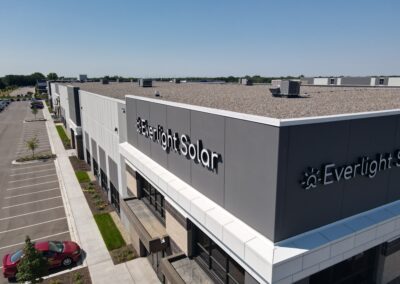Compared to traditional energy sources, solar photovoltaic (PV) systems are incredibly beneficial to the environment. After installation, solar panels provide a means of generating electricity with zero carbon emissions. Solar power produces clean energy that doesn’t contribute to climate change. Additionally, solar energy does not drastically affect the general population’s health compared to natural gas and fossil fuels.
However, despite the lack of carbon emissions involved in solar energy production, the entire lifespan of solar is less carbon-free. Manufacturers craft solar panels in a factory, and users will recycle their panels at the end of their use. These processes are the two portions of the solar lifespan contributing to their carbon footprint. Yet, it is essential to remember that solar systems generate electricity free of emissions for decades, which often outweighs the adverse environmental effects during the manufacturing and processing stages.

Energy Payback Time
The environmental effects of solar do not have a negative net impact. The energy payback time (EPBT) determines the overall effect. EPBT calculates the time it will take for solar panels to generate enough clean energy to “pay back” the energy consumed in the production process. EPBT considers different factors, including the productivity of your solar panels, their production, and their disposal.
For example, by residing in an area with much sunlight, you will increase the efficiency of your panels. This results in higher electricity production, thus lowering the EPBT. Solar panels also need to be transported from where they are made to the point of installation. For example, suppose the panels are manufactured in China but installed in the United States. In that case, the EPBT is longer than U.S.-made sola panels because manufactures must transport them further.
Environmental Impacts of Solar
Energy: The manufacturing stage of solar requires energy upfront to convert raw minerals into the products used for photovoltaics. These materials may come from another facility, and transportation can increase carbon emissions.
Chemicals: Producing solar-grade silicon often involves using hazardous chemicals, which could impact the environment if not disposed of properly. The Silicon Valley Toxics Coalition (SVTC) tracks the environmental records of most major solar manufacturers in an annual report.
ENVIRONMENTAL BENEFITS OF SOLAR
Although solar isn’t perfect, the energy required to create solar modules is generally “paid back” within 2 to 4 years! The emissions generated in the solar manufacturing process are 3 to 10 times less than expected from producing the same amount of energy using fossil fuels.
Overall the environmental impacts of solar are overwhelmingly positive, and manufacturers are continually looking for new ways to enhance efficiency. In the past ten years, we’ve witnessed a 62% decrease in materials used to create solar modules. This correlates to a reduction in the energy needed in the manufacturing and processing stages. With the improvements in design and technology, the EPBT of solar will continue to decrease, and the overall benefits will outweigh the costs.
With a positive net environmental impact, going solar today is what we as a society can do to ensure that we all take the next step into a more sustainable world. Take this step with Everlight Solar, and contact us today!




